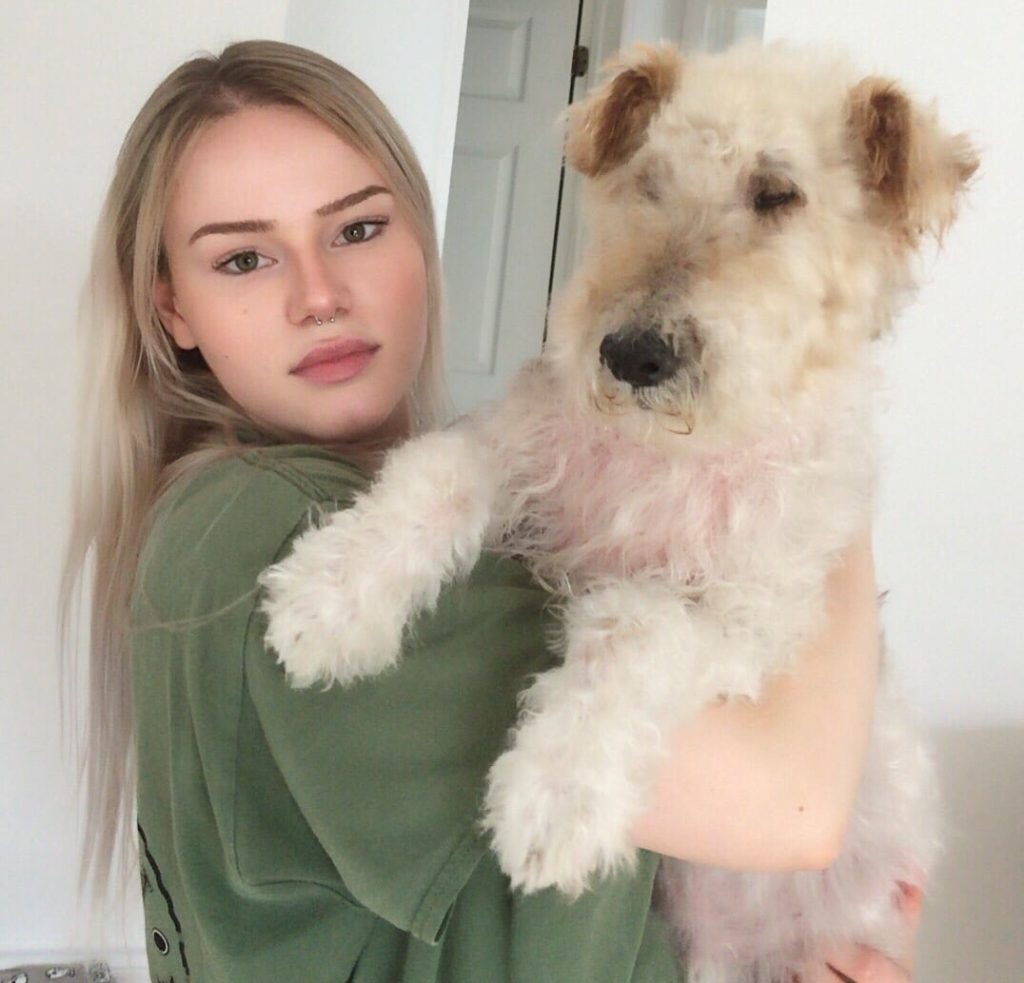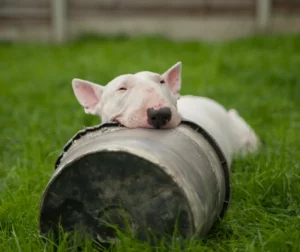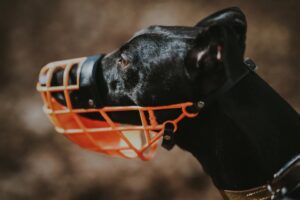Dogs are social animals with a range of sophisticated behaviors for communicating with their peers. One of these behaviors, lying down in the sight of other dogs, is often linked to calming signals, a series of gestures and postures that dogs use to avoid conflict and maintain peace.
What Are Calming Signals?
Calming signals are behaviors that dogs use to calm a potentially stressful or tense situation. Lying down is one of these signals, but there are several others. These gestures are intended to show other dogs that they do not have aggressive intentions and are seeking to avoid conflict. Below you will find a list of the most common calming signals.
When a dog lies down in the presence of another dog, it may be a gesture intended to calm the other dog and defuse any tension. By moving into a lower position, the dog indicates that it is not a threat. This helps reduce stress and facilitate friendlier interactions.
In What Context Does Your Dog Lie Down?
To properly interpret this behavior, it is essential to understand the context in which it occurs. For example, if your dog immediately lies down upon seeing another dog, it may mean that he wants to avoid any misunderstandings from the start. On the other hand, if he lies down after an initial exchange of glances or sniffs, this could indicate that he wants to prolong a peaceful interaction.
In some cases, lying down can also be linked to some anxiety or high-stress levels in your dog. If your dog has had negative experiences with other dogs in the past, he may adopt this posture to protect himself and try to calm the other dog as well as himself.
What Are the Other Calming Signals?
Besides lying down, here are some other calming signals you can observe in dogs:
- Yawning
- Lip licking
- Turning the head
- Softening the eyes
- Licking the nose
- Sitting down
- Turning away
- Scratching
- Sniffing
- Slow movements
- Walking in a curve
- Freezing
- Play bow
Why Is Lying Down One of the Strongest Signals a Dog Can Use?
1. Clear, Non-Threatening Expression
Lying down is a posture that significantly reduces a dog’s apparent size, making it less intimidating to others. This stance sends a clear message: “I am not a threat.” By lying down, the dog shows vulnerability and a lack of aggressive intentions, which helps defuse any potential tension.
2. Invitation to Peaceful Interaction
When a dog lies down in the presence of another dog, it may be an invitation for friendly interaction. This gesture indicates that he is open to a peaceful and respectful encounter. By showing that it has no hostile intention, the dog encourages the other to approach without fear.
3. Reduction of Potential Conflicts
Conflicts between dogs can often be avoided with clear calming signals. Lying down is a powerful way to prevent a potentially tense situation from escalating. This behavior reassures the other dog, thus reducing the risk of confrontation.
4. Game Context
Lying down can also be a play signal. When one dog gets into a play position (front legs down, rear raised), he is inviting the other dog to participate in a play activity. This posture is a clear way to show that he wants to interact in a happy and non-aggressive way. If the dog gets into a play position and maintains the position, it probably means that your dog wants to calm the situation.
5. Emotional State
Lying down can also reflect a dog’s emotional state. A dog who feels safe and comfortable is more likely to adopt this posture around other dogs. This may indicate that he is relaxed and ready to interact without stress. Conversely, an anxious or stressed dog may lie down to show that he is not looking for conflict and wants the other dog to keep his distance.
Why is this signal so strong?
Visibility and clarity: Lying down is a very visible behavior and difficult to ignore. This makes it a clear and unambiguous signal to the other dog.
Emotional impact: By putting himself in a vulnerable position, the dog demonstrates a high degree of trust or need to calm the other, which has a strong emotional impact on the interaction.
Universal Answer: This signal is understood by the majority of dogs, regardless of breed or size. This makes it universally effective in canine communication.
How to React as an Owner?
As an owner, it is important to understand and respect this behavior. Here are some tips for responding appropriately:
Observation: Monitor your dog’s interactions with other dogs. Note the situations in which he lies down and the reactions of other dogs.
Encouragement: Reinforce this positive behavior with treats, showing your dog that he has done the right thing by defusing a potentially tense situation.
Minimal intervention: If your dog lies down, let him handle the situation. Only intervene if you notice that the other dog is not respecting your dog’s calming signals and the situation is becoming potentially dangerous.
Gradual training and socialization: Gradually expose your dog to environments with other dogs, starting with calm, controlled situations. For example, you can set up a few meters from a dog park and give your dog treats when he lies down or sits. Make sure every interaction is positive to build their confidence.
Consultation with a professional: If your dog seems particularly anxious or stressed, consider consulting a dog behavior specialist. They can provide you with specific techniques to help your dog feel more comfortable.
By understanding why your dog lies down when he sees other dogs and recognizing calming cues, you can better meet his needs and facilitate more harmonious social interactions. Canine behaviors are often complex and deeply rooted in their experiences and personality, and a careful and informed approach can greatly improve their well-being.
These articles might interest you:
-
Daily Routine: Why Does Your Dog Need It?
-
10 Ways to Calm Your Overly Excited Dog
-
6 Commands Your Dog Should Know
-
The Essential Guide to a Problem-Free Dog







